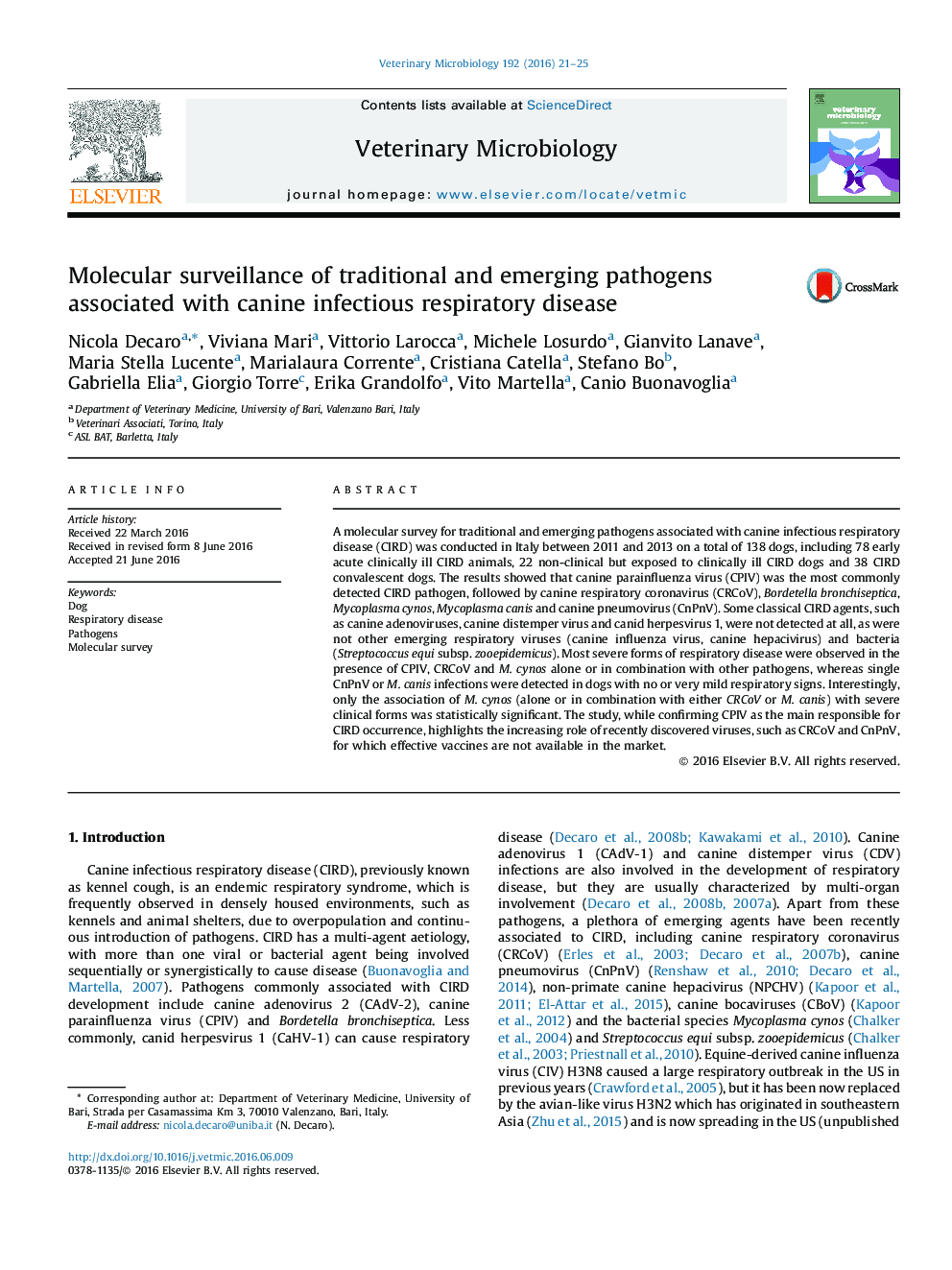| کد مقاله | کد نشریه | سال انتشار | مقاله انگلیسی | نسخه تمام متن |
|---|---|---|---|---|
| 5799613 | 1555331 | 2016 | 5 صفحه PDF | دانلود رایگان |
- A molecular survey for CIRD agents was conducted during years 2011-2013.
- Canine parainfluenza virus was the most frequently detected pathogens.
- The emerging pathogens canine respiratory coronavirus, Mycoplasma cynos and canine pneumovirus were sporadically detected.
- Most severe forms of respiratory disease were observed in dogs infected with M. cynos alone or in combination with either CRCoV or M. canis.
- CIRD vaccines should be updated to include emerging pathogens.
A molecular survey for traditional and emerging pathogens associated with canine infectious respiratory disease (CIRD) was conducted in Italy between 2011 and 2013 on a total of 138 dogs, including 78 early acute clinically ill CIRD animals, 22 non-clinical but exposed to clinically ill CIRD dogs and 38 CIRD convalescent dogs. The results showed that canine parainfluenza virus (CPIV) was the most commonly detected CIRD pathogen, followed by canine respiratory coronavirus (CRCoV), Bordetella bronchiseptica, Mycoplasma cynos, Mycoplasma canis and canine pneumovirus (CnPnV). Some classical CIRD agents, such as canine adenoviruses, canine distemper virus and canid herpesvirus 1, were not detected at all, as were not other emerging respiratory viruses (canine influenza virus, canine hepacivirus) and bacteria (Streptococcus equi subsp. zooepidemicus). Most severe forms of respiratory disease were observed in the presence of CPIV, CRCoV and M. cynos alone or in combination with other pathogens, whereas single CnPnV or M. canis infections were detected in dogs with no or very mild respiratory signs. Interestingly, only the association of M. cynos (alone or in combination with either CRCoV or M. canis) with severe clinical forms was statistically significant. The study, while confirming CPIV as the main responsible for CIRD occurrence, highlights the increasing role of recently discovered viruses, such as CRCoV and CnPnV, for which effective vaccines are not available in the market.
Journal: Veterinary Microbiology - Volume 192, 30 August 2016, Pages 21-25
